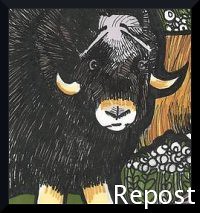 Many would like to paint evolution by natural selection as a vicious idea, drawing upon our fears of purposelessness and elitism by highlighting the misleading phrase, "survival of the fittest."
Many would like to paint evolution by natural selection as a vicious idea, drawing upon our fears of purposelessness and elitism by highlighting the misleading phrase, "survival of the fittest."
It can be a scary idea when applied to our society; we don't want to think of the disabled and handicapped as unfit in their environment. It seems to be a cold view of the world, devoid of compassion.
I can understand the apprehension. Fortunately, evolution is a biological process, not a cultural/societal process, so when it is superimposed on societal structure, it does not exactly fit the bill. Though society and therefore culture certainly result from our genetic predispositions, they are not naturally compatible with organic evolutionary theory.
With that said, there are myriad partnerships in nature, where organisms can live together without competition even when consuming the same resources. So, "survival of the fittest" does not automatically dictate competition.
 The red and giant panda are perfect examples of such cohabitation. Both animals spend 85% of their existence within the same areas, eating almost exclusively from the same plant: bamboo. A conclusion seems simple; they should be in direct competition for food and space.
The red and giant panda are perfect examples of such cohabitation. Both animals spend 85% of their existence within the same areas, eating almost exclusively from the same plant: bamboo. A conclusion seems simple; they should be in direct competition for food and space.
But they're not. It turns out that the animals browse in different microhabitats, smaller elements of the main habitat.
The giant panda sticks to the gentle slopes of the Himalayas where there is less brush and other obstacles, giving them more room through which to move their bulk. The red panda, on the other hand, slimmer and slighter, browses on bamboo leaves from the branches of tall rhododendrons adorning the steeper slopes of the young mountains.
So even within the same area, animals can find little niches to exploit, giving them an opportunity to grow and expand.
Unfortunately, both pandas are losing the expansion battle to the Chinese.
Both are listed as Appendix I by the Convention on International Trade in Endangered Species (CITES), placing them among the most endangered animals in the world.
But the Chinese are not standing idly by. Twelve reserves have been set aside for the pandas, and special corridors assist them in safe migration between habitats. This is not entirely a moral decision; giant pandas are one of China's most profitable exports.
Next time: Red panda hats & the cohabitation of the pandas through evolution - sympatry vs. parapatry.
Resources:
F Wei, Z Feng, Z Wang, J Hu (2000) Habitat Use and Separation Between the Giant Panda and the Red Panda. Journal of Mammalogy: 448-455
Johnson KG, Schaller GB, Hu J (1988) Comparative behavior of Red and Giant Pandas in the Wolong Reserve, China. Journal of Mammalogy 69: 552-564
Photos by: Jeff Kubina, Sh0dan
THIS DON'T GIVE ME ANY INFO!!!!!!!!!!!!!!!!!!!!!!!!!!!!!!!!!!!!!!!!
THIS IS THE WORST WEBSITE EVER!!!